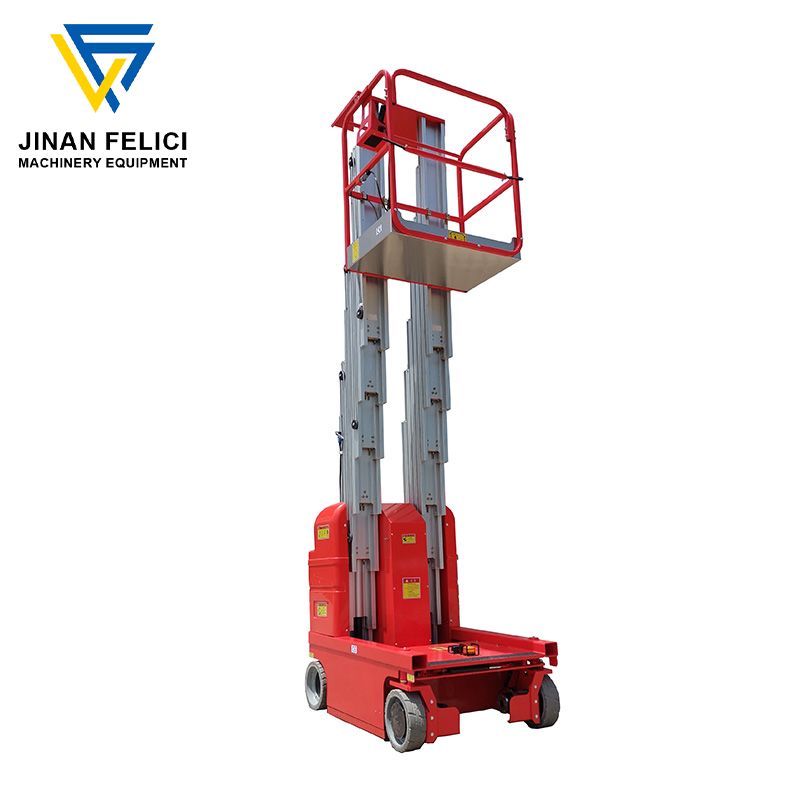Aerial Work Platform: Enhancing Efficiency and Safety at Heights
Introduction
In today's world, where construction and maintenance projects often involve working at significant heights, the need for safe and efficient access solutions has become paramount. Aerial work platforms (AWPs) have emerged as a valuable tool in various industries, providing a secure and versatile means of reaching elevated work areas. This article explores the benefits, types, applications, and safety considerations associated with aerial work platforms, emphasizing their crucial role in enhancing productivity and worker well-being.
1. Understanding Aerial Work Platforms
Aerial work platforms, also known as elevating work platforms (EWPs), are mechanical devices designed to elevate workers, tools, and materials to reach elevated work areas safely. These platforms provide a stable and secure working environment, allowing workers to perform tasks at heights efficiently. Aerial work platforms come in various designs and configurations to suit different job requirements.
2. Types of Aerial Work Platforms
2.1 Scissor Lifts Scissor lifts are one of the most common types of aerial work platforms. They feature a crisscrossing mechanism that extends vertically, providing a stable platform for workers. Scissor lifts are ideal for both indoor and outdoor applications, offering good maneuverability and substantial lifting capacities.
2.2 Boom Lifts Boom lifts, also known as cherry pickers, consist of a telescopic arm or an articulated boom that extends outward and upward. This design allows for exceptional reach and maneuverability, making boom lifts suitable for tasks that require access to high, hard-to-reach areas.
2.3 Vertical Mast Lifts Vertical mast lifts, also referred to as personnel lifts, are compact aerial work platforms that offer vertical elevation capabilities. These lifts are perfect for confined spaces and narrow aisles, providing a versatile solution for maintenance tasks in retail stores, warehouses, and manufacturing facilities.

3. Applications of Aerial Work Platforms
Aerial working platforms find application in a wide range of industries and sectors:
3.1 Construction AWPs play a vital role in the construction industry, enabling workers to perform tasks such as painting, welding, electrical installations, and window cleaning at elevated heights with ease. Their versatility and stability make them invaluable assets on construction sites.
3.2 Maintenance and Repair From building maintenance to equipment repair, aerial work platforms streamline operations by providing safe and efficient access to overhead structures, machinery, and building facades. Workers can perform maintenance tasks and inspections swiftly, reducing downtime and improving productivity.
3.3 Film and Entertainment In the film and entertainment industry, aerial work platforms are utilized to capture breathtaking shots and create dynamic scenes. They enable camera operators and crew members to achieve unique perspectives and execute complex camera movements with precision.
4. Advantages of Aerial Work Platforms
4.1 Enhanced Efficiency Aerial work platforms significantly improve work efficiency by eliminating the need for traditional methods such as ladders or scaffolding. Workers can easily maneuver the platform to the desired height, reducing setup time and enhancing productivity.
4.2 Versatility With a variety of platforms available, aerial work platforms can adapt to diverse job requirements. Whether it's a scissor lift for indoor maintenance or a boom lift for outdoor construction, these platforms offer versatility and flexibility.
4.3 Safety Worker safety is of utmost importance, and aerial work platforms prioritize this aspect. They are equipped with safety features such as guardrails, emergency stop buttons, and non-slip surfaces, ensuring a secure working environment at heights. Fall protection systems can also be integrated for added safety.
5. Safety Considerations for Aerial Work Platforms
5.1 Proper Training and Certification Operating an aerial work platform requires specialized knowledge and skills. Workers should receive comprehensive training and obtain certification to ensure they can operate the equipment safely and effectively.
5.2 Regular Maintenance and Inspections Routine maintenance and inspections are essential to keep aerial work platforms in optimal condition. Inspecting components, checking for damage, and performing necessary repairs will help prevent accidents and ensure the longevity of the equipment.
5.3 Adhering to Safety Guidelines Strict adherence to safety guidelines and regulations is crucial when working with aerial work platforms. This includes proper use of personal protective equipment (PPE), maintaining a safe distance from power lines, and following load capacity limits.
Conclusion
Aerial work platforms have revolutionized the way work is conducted at heights, offering a secure and efficient means of access for workers across various industries. Their versatility, enhanced productivity, and prioritization of safety make them indispensable tools for construction, maintenance, and various other applications. By investing in proper training, maintenance, and adhering to safety protocols, businesses can harness the full potential of aerial work platforms and ensure the well-being of their workforce.
FAQs
Q1. Are Felici aerial work platforms suitable for outdoor use?
A1. Yes, many aerial work platforms are designed for outdoor use, such as boom lifts, which provide exceptional reach and maneuverability in various outdoor settings.
Q2. Can aerial work platforms be used on uneven terrain?
A2. Yes, there are aerial work platforms specifically designed for rough and uneven terrain, equipped with features like four-wheel drive and enhanced stability systems.
Q3. What safety precautions should be taken when operating an aerial work platform?
A3. Operators should undergo proper training, wear appropriate PPE, adhere to weight and height limits, and avoid operating near power lines to ensure safety.
Q4. Do aerial work platforms require regular maintenance?
A4. Yes, regular maintenance and inspections are crucial to keep aerial work platforms in safe working condition. This includes checking hydraulic systems, electrical components, and structural integrity.
Q5. How can I obtain certification for operating an aerial work platform?
A5. There are various training programs available that offer certification for operating aerial work platforms. These programs cover both theoretical and practical aspects of equipment operation.

Comments
0